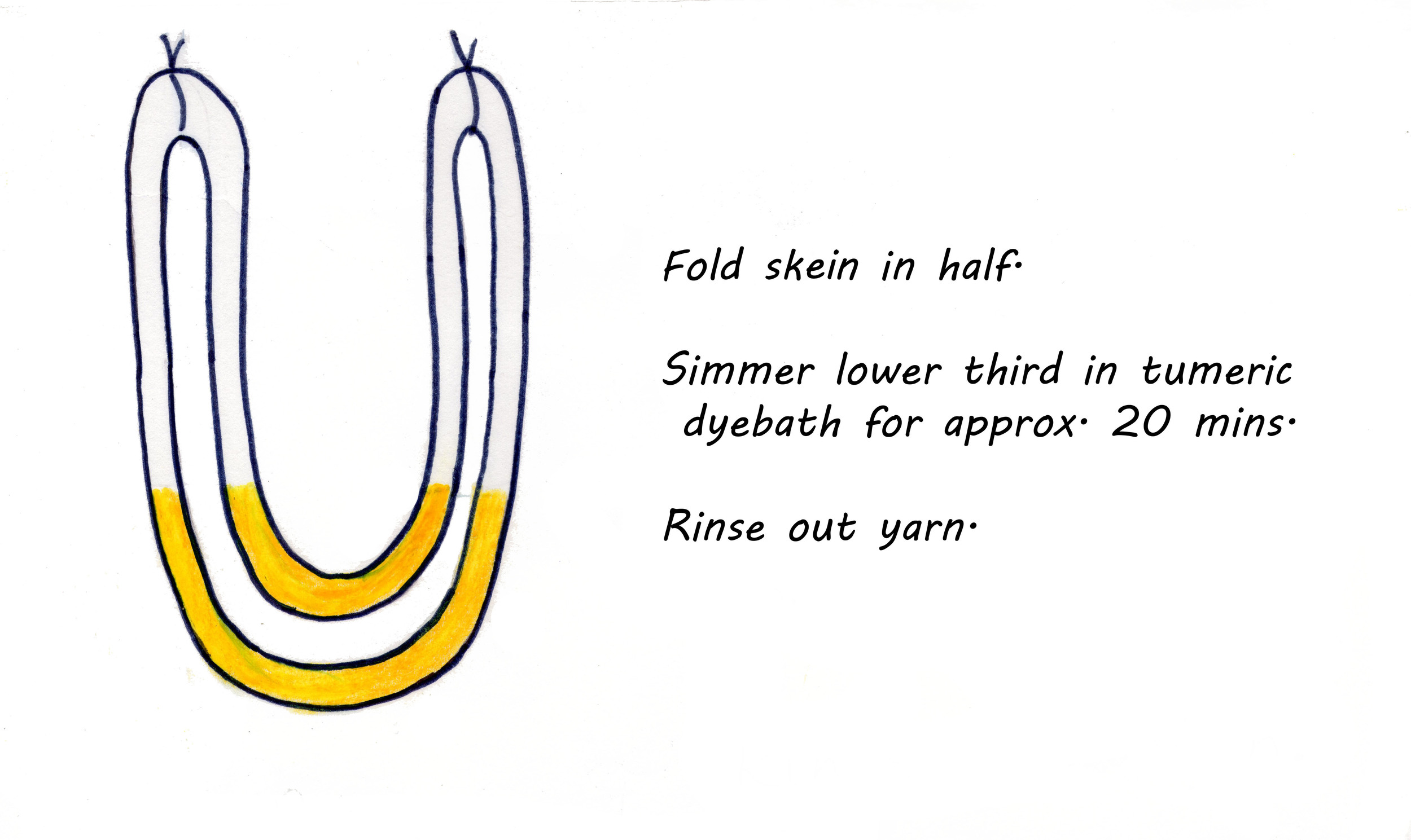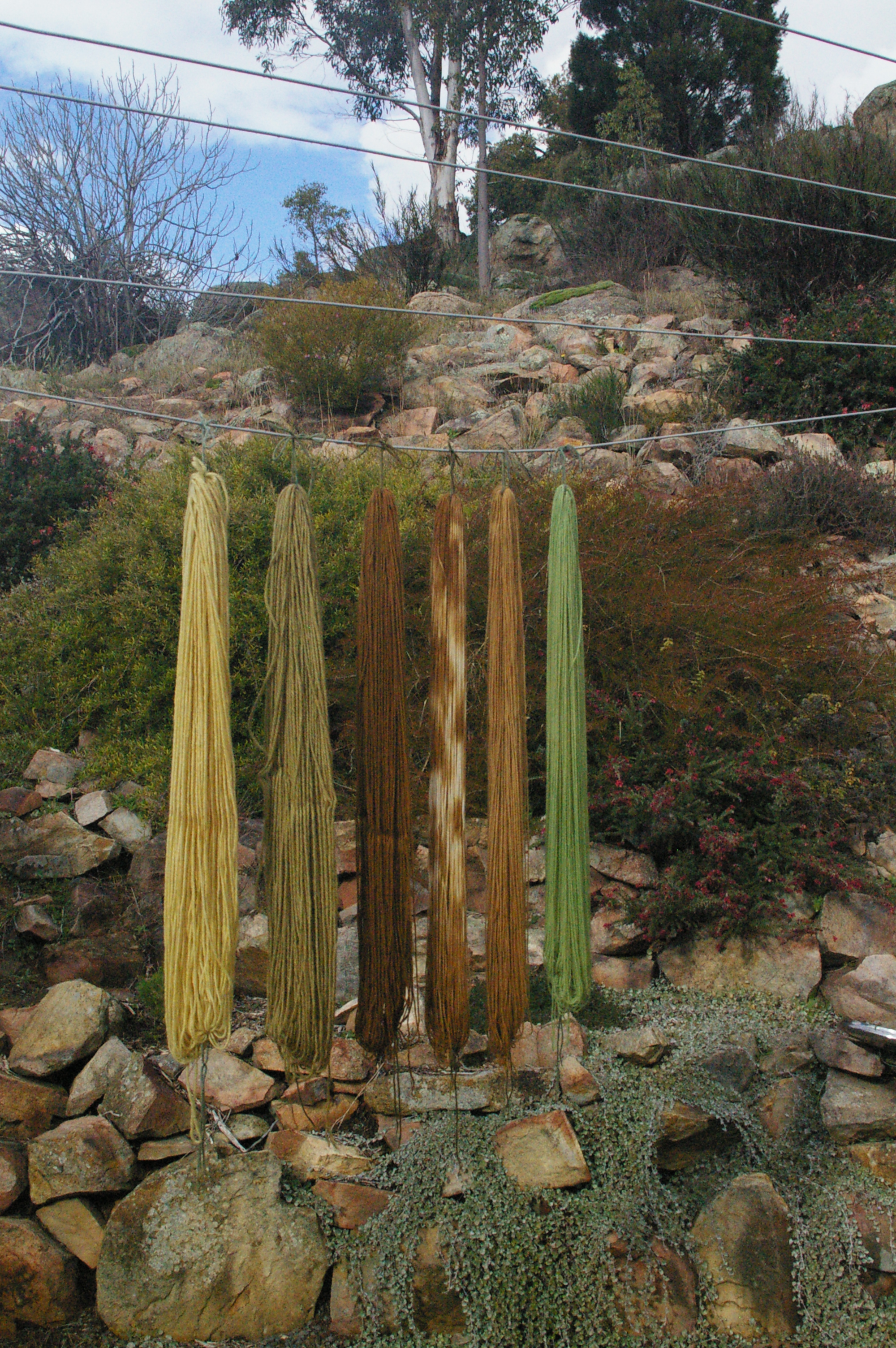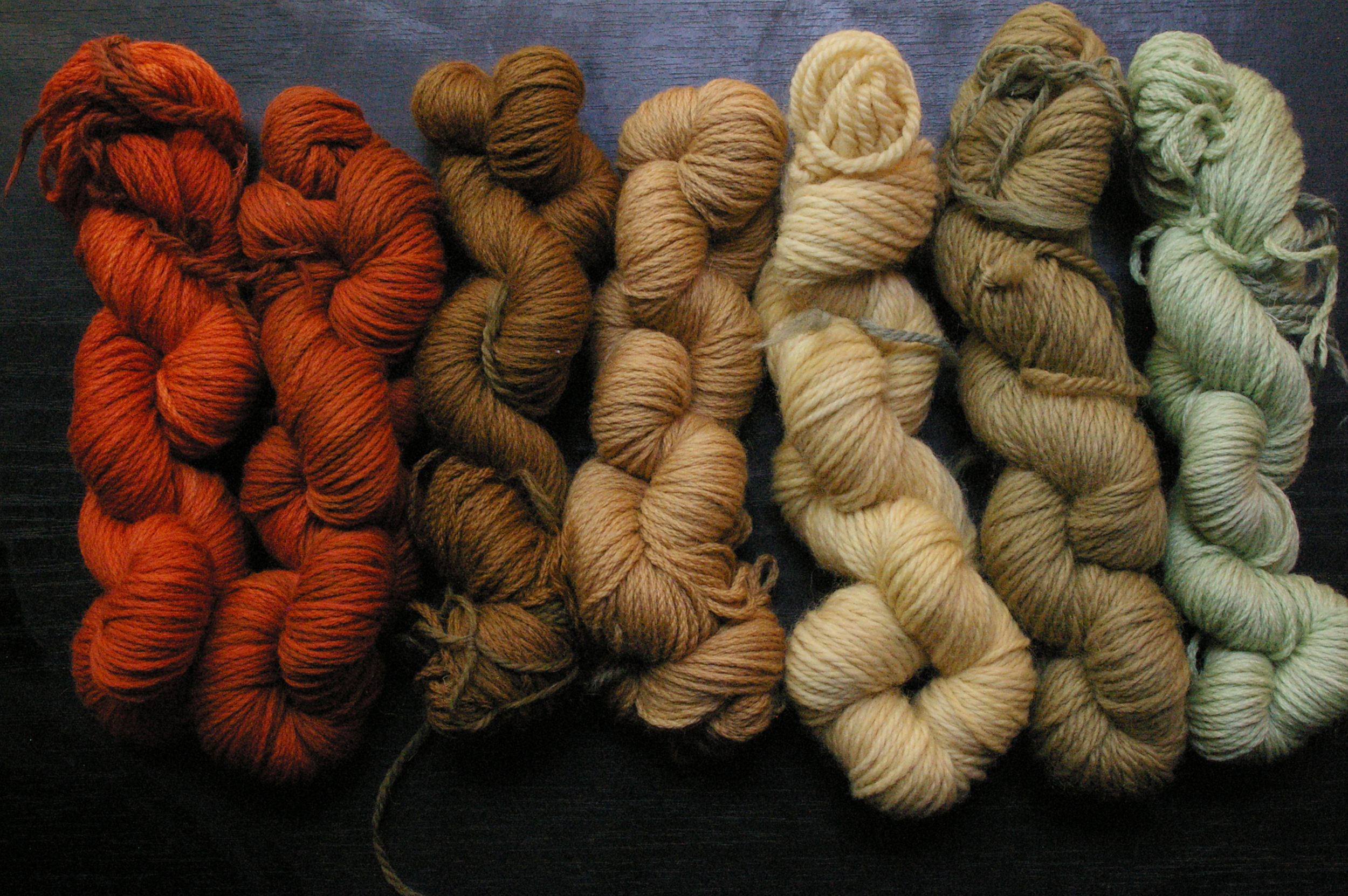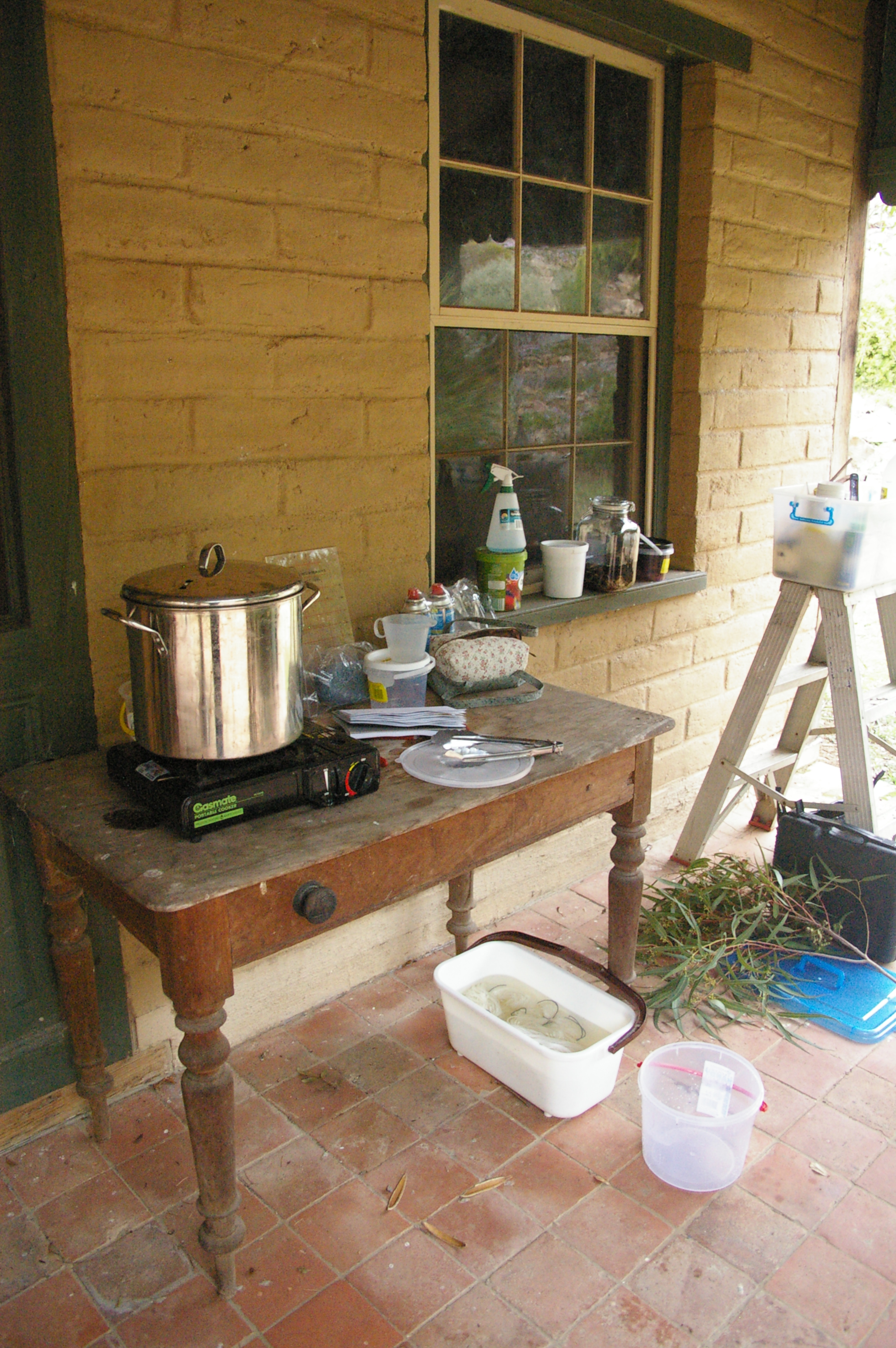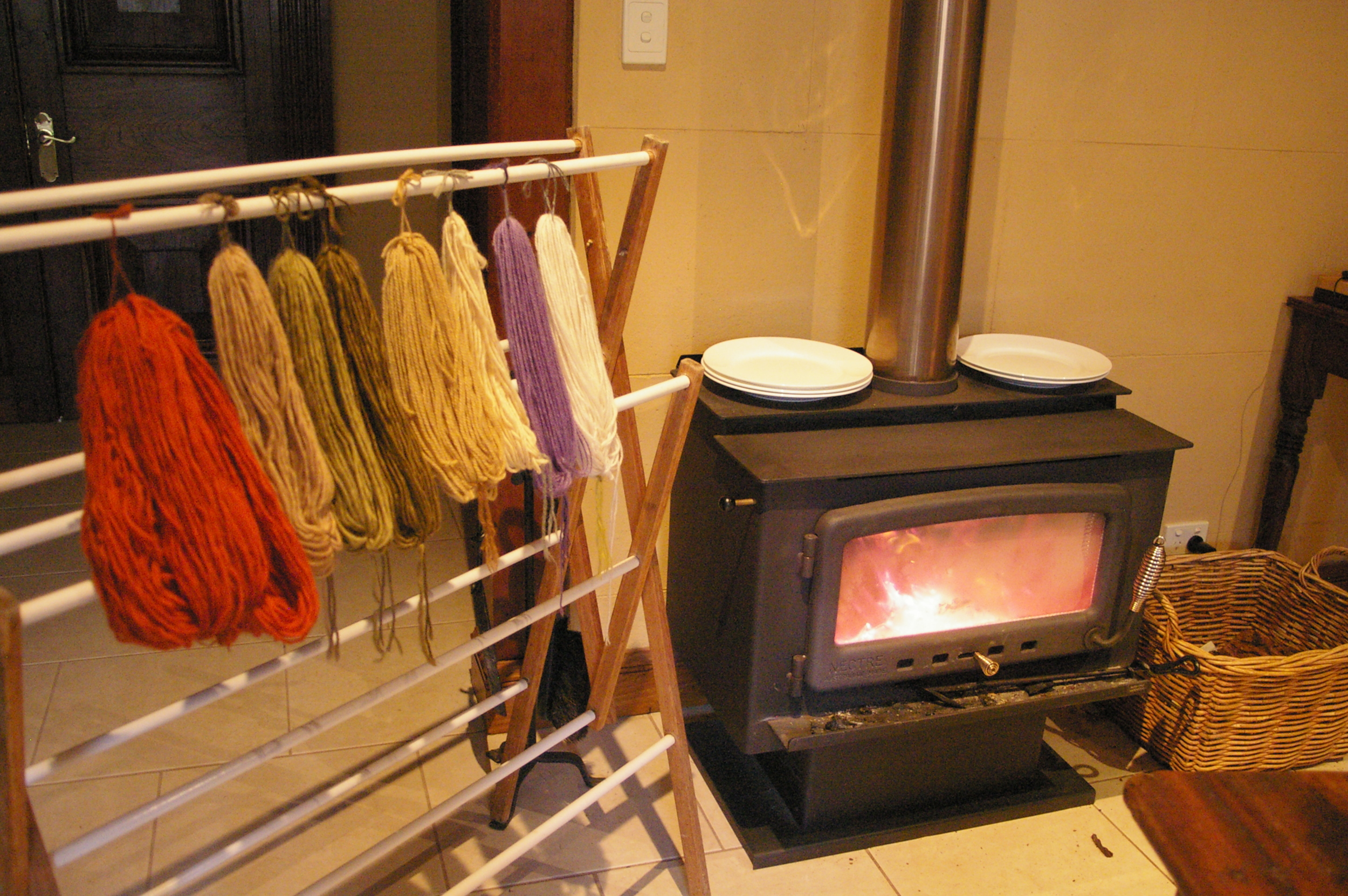I had my first go at producing variegated yarns with natural dyes. I have done it before with chemical dyes using a technique of painting straight onto the yarns, however this technique does not really work for most of the natural dyes as they take time to be absorbed by the yarn. Where there is a will there's a way and here is what I came up with for my first attempt.
I tried two different techniques, the first technique is more calculated, I will call it the dip dye method. It is achieved by sectioning off areas of the skein, dyeing and over dyeing, the second technique is entirely random.
Dip Dye Method
In this method I used three different dyestuffs, Turmeric, Indigo and Cochineal. The indigo over dyes the Turmeric turning it green and the cochineal over the indigo makes purple. There are areas of cross over so you may get a little blue coming through but I quite like that.
To simmer only part of the skeins I used a stick across the top of my boiler and bulldog clips to hold the yarn tied to the stick so that the right amount of my skein was entering the dye-bath.
The finished skeins.
The Random Method
My random yarns were achieved by twisting up the skeins, dyeing them, then twisting them in the opposite direction and over-dyeing, then a final dye with then skein untwisted. This process gives a dappled effect, and you never quite know what your going to get.




